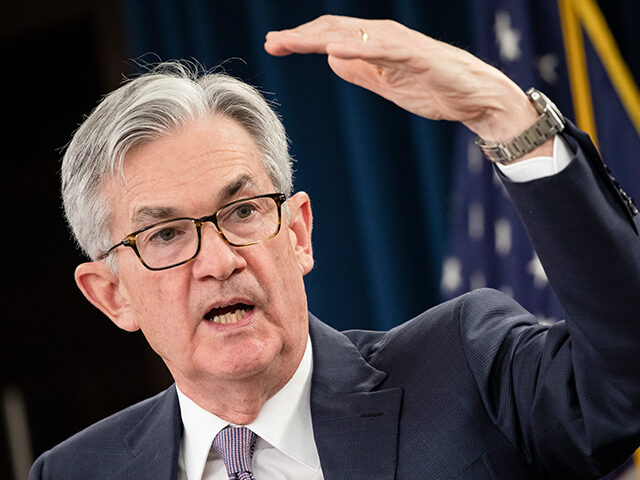Economic growth in the U.S. accelerated by more than previously thought in the third quarter, updated figures from the government showed on Wednesday.
Prices were also up by more than previously reported, heightening the challenge faced by the Federal Reserve as it attempts to tamp down on inflation.
Gross domestic product, a key measure of economic growth, expanded at an annual rate of 2.9 percent in the July through September period, the Commerce Department said. The preliminary reading released last month showed the economy growing at a 2.6 percent annual rate.
The economy contracted in the first and second quarter as the trade deficit soared and businesses cut back on inventory growth following a disappointing holiday season. The first half of the year also saw the highest inflation in four decades, leading some analysts to describe conditions as stagflationary.
The personal consumption expenditure price index, the Fed’s favored measure of inflation, was also revised higher. Prices were up 4.7 percent in the third quarter compared with a year earlier, one-tenth of a percentage point higher than the preliminary report. Core prices, which exclude food and fuel, were up 4.6 percent, also one-tenth of a point above the earlier reported figure.
Consumer spending, the main engine of economic growth in the U.S. rose by a robust annual rate of 1.7 percent, the government said. The preliminary estimate was for a milder 1.4 percent.
Spending on goods fell by less than previously thought. The government said Wednesday that goods spending was down 0.2 percent instead of the 1.2 percent decline reported earlier. Durable goods spending was revised to show a 0.3 percent decline versus the 0.8 percent decline reported a month ago. Nondurable goods spending fell by just 0.1 percent instead of the 1.7 percent earlier reported.
Services spending grew slightly less than reported, with the estimated growth falling by one-tenth of a point to 2.7 percent.
Corporate profits also fell 1.1 percent in the third quarter, suggesting that businesses have been less able to pass on higher costs than they were a year ago.
Nonresidential fixed investment, a key proxy for business investment in future growth, was much stronger than reported earlier. The government said Wednesday this grew at an annual rate of 5.1 percent, up from the earlier estimate of 3.7 percent. Investment in equipment rose at a solid 10.7 percent rate, down from the preliminary estimate of 10.8 percent. Investment in structures for business declined at a 6.9 percent rate, better than the 15.3 percent decline earlier reported.
The largest contribution to growth in the third quarter came from a significant decline in the trade deficit that added 2.9 percentage points to GDP.
The resilience of economic growth in the face of the Fed’s unprecedented pace of rate hikes this year highlights the challenge the Federal Reserve faces in attempting to cool down the economy. Fed officials have recently begun pointing out that monetary policy typically acts on the economy after a long and variable time lag.

COMMENTS
Please let us know if you're having issues with commenting.